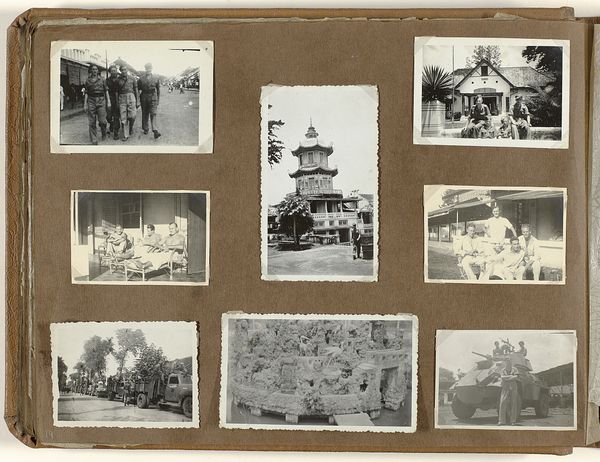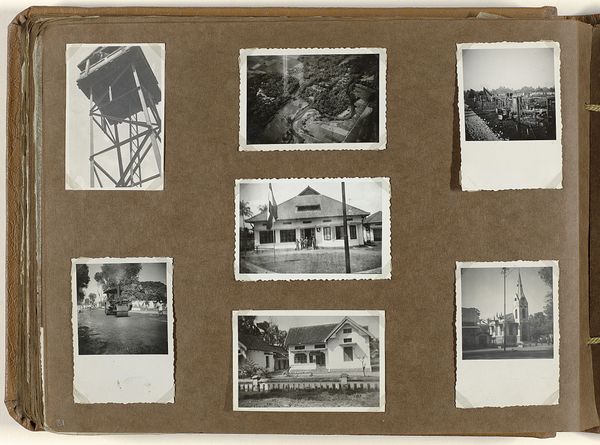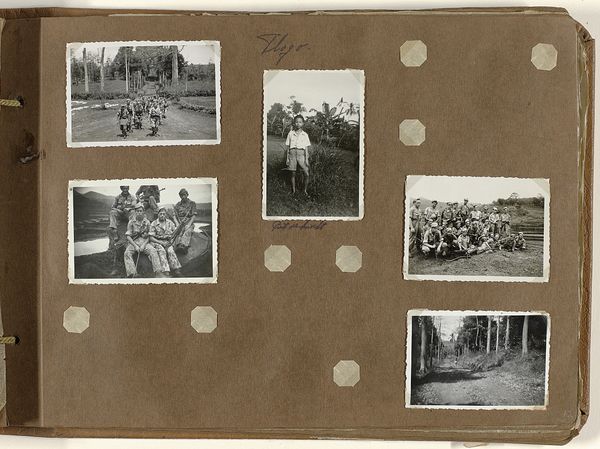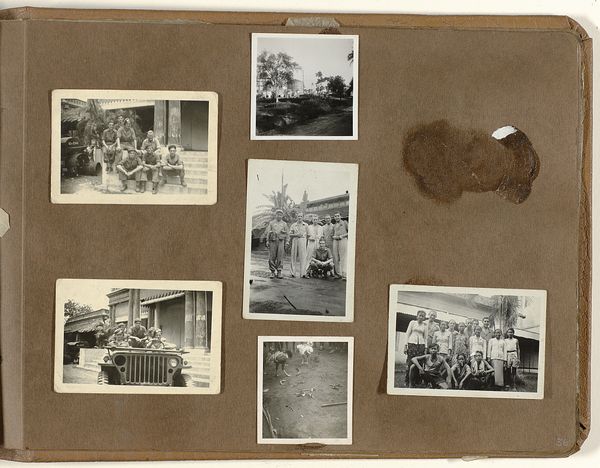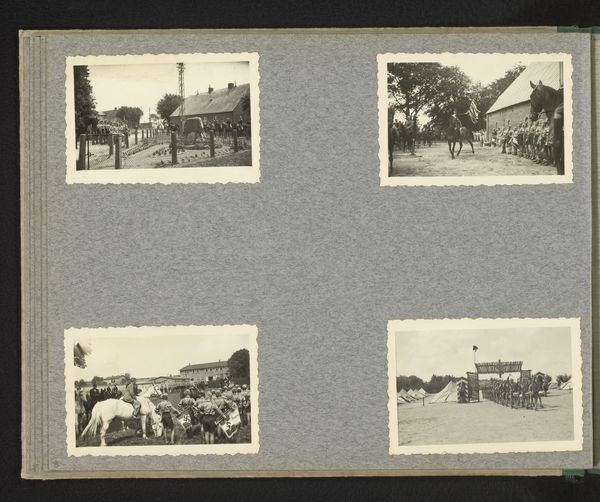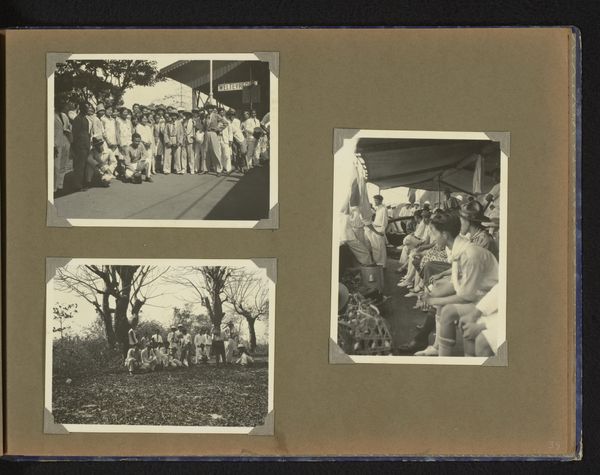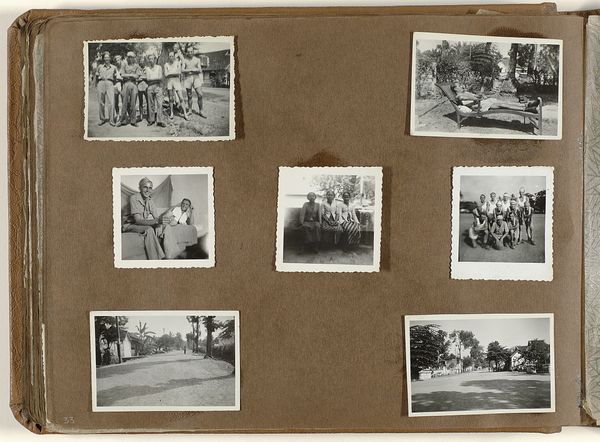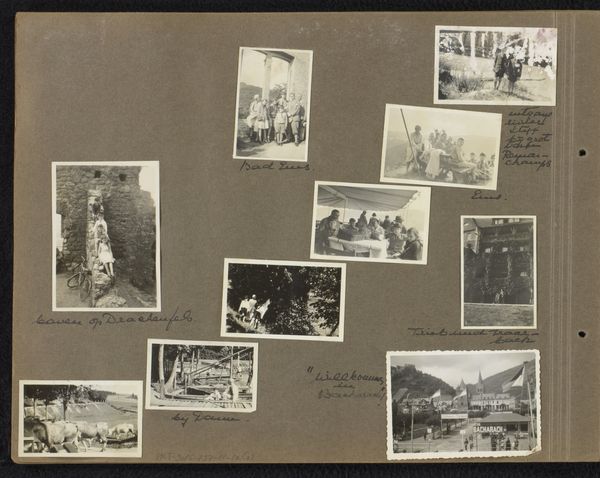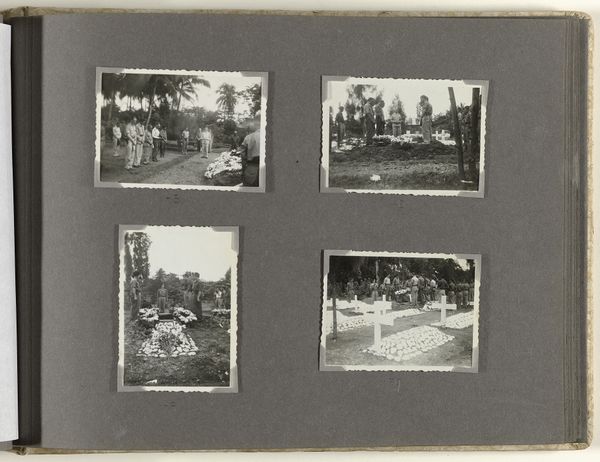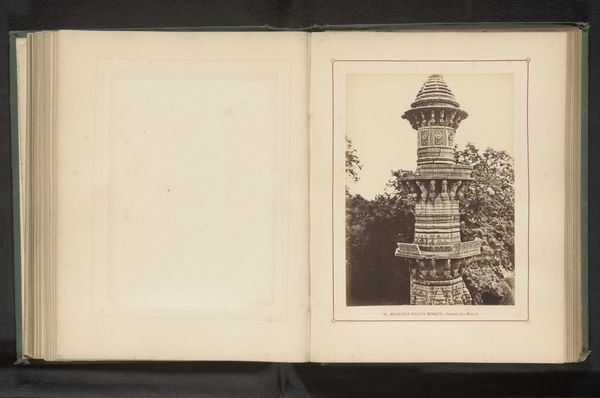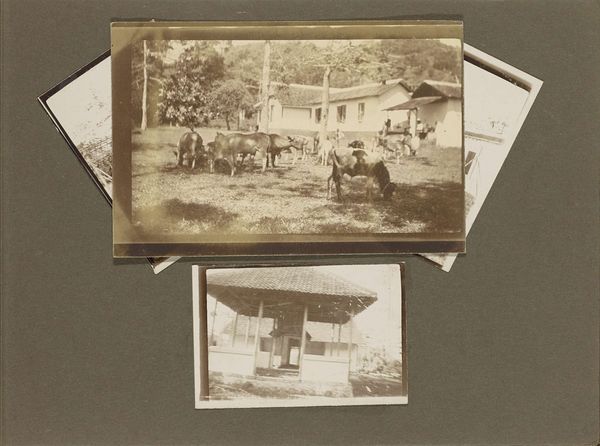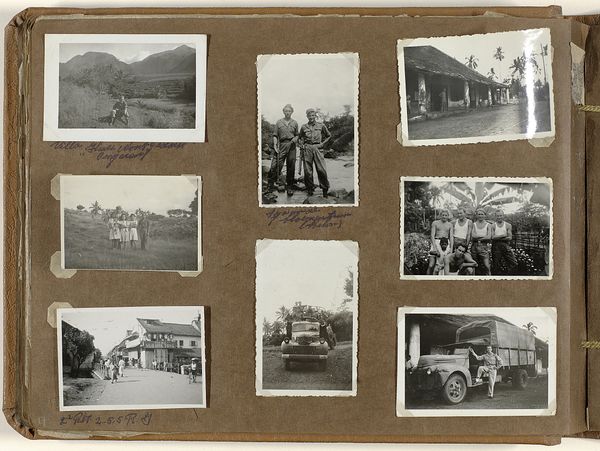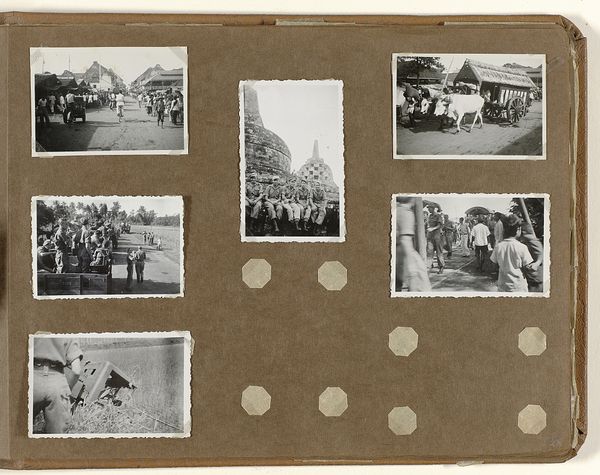
photography, gelatin-silver-print
#
portrait
#
still-life-photography
#
landscape
#
photography
#
postcolonial-art
#
soldier
#
gelatin-silver-print
Dimensions: height 24 cm, width 34 cm
Copyright: Rijks Museum: Open Domain
Editor: This is a photograph, or rather a collection of them within an album page, titled “Lokale bevolking,” dating from 1948 to 1949. It's a gelatin-silver print and given the grouping of people, architecture and landscapes, it has quite a historical and personal feel to it. What symbols or repeated elements do you find most significant in this image? Curator: Well, the layering itself speaks volumes. Arranged, not strictly ordered, with multiple views and poses of different groups. Note the prominence given to architectural imagery— a Pagoda style building alongside posed soldier figures – how do you think that juxtaposes with images showing what appear to be local groups of families and workers? Editor: It creates a contrast, doesn’t it? Almost like placing different power structures next to each other. The Pagoda-style structure and the soldiers represent established authority, perhaps? Curator: Precisely! And the placement of the soldier images is especially loaded: there they stand guard over this collected memory, yet amidst the others they're simply another form of local… population. Note the choice of angles: in most shots everyone looks towards the photographer - inviting an inclusive communal gaze and narrative. What tensions does this reveal, if any, with what might have actually been happening during that post-colonial time period? Editor: So, you’re saying the image, through its arrangements of people, monuments and figures, subtly portrays both the authority of the colonizers and the resilience and daily lives of the local people, not making one inherently "better" than the other, even during a moment of immense upheaval? Curator: Exactly! Memory isn’t just about what's recorded, but how it’s all held together, often carrying different cultural echoes over time. What new details are noticeable with that consideration in mind? Editor: I guess understanding its organization shows a push and pull between personal documentation, maybe even a propagandistic representation, and deeper undercurrents of colonial life and a need to maintain a certain standard or hierarchy between those representations.
Comments
No comments
Be the first to comment and join the conversation on the ultimate creative platform.
